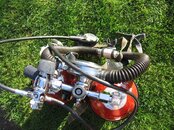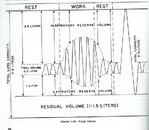johndiver999
Contributor
I did not verify the volumetric data, but I assume they are mathematically correct. However, your lungs are not
simply balloons.
It is my understanding that, portions of the lungs can be isolated or cut off on a hard exhale and this could result in an over expansion injury, even though the total lung volume capacity has not been exceeded. The vulnerability is associated with a portion of the lung that might be isolated from the hard exhale.
I used to do a similar calculation and remember thinking that if you just exhale completely at the bottom from x feet, that it is impossible to have a barotrama because the volume would go from residual to less than maximum volumetric capacity upon reaching the surface. I don’t think this overly simplistic conceptual model is necessarily valid.
So the advice of keeping the airway open and releasing air in a somewhat relaxed and continuous manner is still the best.
simply balloons.
It is my understanding that, portions of the lungs can be isolated or cut off on a hard exhale and this could result in an over expansion injury, even though the total lung volume capacity has not been exceeded. The vulnerability is associated with a portion of the lung that might be isolated from the hard exhale.
I used to do a similar calculation and remember thinking that if you just exhale completely at the bottom from x feet, that it is impossible to have a barotrama because the volume would go from residual to less than maximum volumetric capacity upon reaching the surface. I don’t think this overly simplistic conceptual model is necessarily valid.
So the advice of keeping the airway open and releasing air in a somewhat relaxed and continuous manner is still the best.







